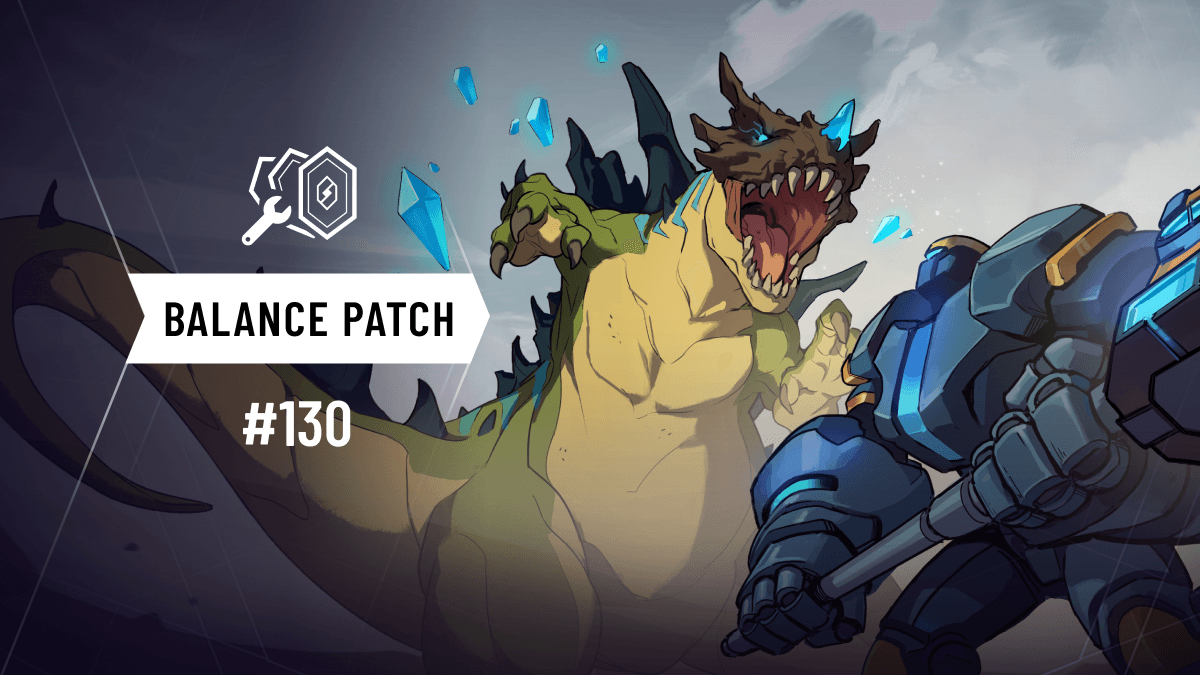Welcome to Sky #8: Constructed Deckbuilding - Part 1

One of SkyWeaver’s greatest aspects is the amount of customization and variance it allows players to exercise in their personal deckbuilding. Since you can only have one of a card in your deck, each individual choice you make carries a considerable amount of weight, and can have a huge impact on how your games play out, which makes card choices and deckbuilding an extremely important, personalizable, and potentially daunting process.
So today, we’ll be giving an overview of the deckbuilding process in SkyWeaver, some general deck archetypes, and the basics of building decks that can crush your opponents!
Post 1 - The Basics of SkyWeaver
Post 2 - Player Actions
Post 3 - Keywords
Post 4 - Enchantments
Post 5 - Prisms
Post 6 - Discovery Mode
Post 7 - Elements of SkyWeaver
Post 8 - Constructed Deckbuilding Part 1
Post 9 - Constructed Deckbuilding Part 2
Post 10 - Top Cards of 2019 Part 1
Post 11 - Top Cards of 2019 Part 2
Post 12 - Top Cards of 2019 Part 3
Post 13 - Introducing Intellect
Choosing Your Prisms
The first step to deckbuilding is choosing the Prism(s) your deck will use. Each offers 100 entirely unique cards, so it is important to choose your Prism(s) carefully based on which cards are most important to your deck. For more on Prisms, read our Welcome to Sky #5: Prisms post.
As an example, say I want to make a deck with a focus on the Fire element, so I search for cards that have synergy with Fire. My deck can only have 2 Prisms, so I need to assess which two Prisms have the most important cards for my deck.
Starting off, Agility has Mothermander, which is currently the strongest Fire synergy card in the game, since it will let me summon a board full of Firemander with a single card, and Hot Dog and Run Wild aren’t bad either, and Fuji holds Volcanic blast, a potent Fire-based board wipe, making Agility an excellent first choice.
Strength also has valuable Fire cards for us to consider. We get another copy of Volcanic Blast, as well as Chinook and Hearth Stone, two spells which can draw us our fire cards, as well as Ifrit, which is interesting, and can draw a lot of fire cards, but it might all discard important Fire cards in my hand.
Heart has just one card, Bonfire Shaman, though it is potent, since it can let us draw us lots of cards. Wisdom has Desert Scout, which is a fantastic card, but the fact that both Heart and Wisdom have only one Fire synergy card each really drags them down as potential choices.
As a result of all these factors, I would personally pick Agility and Strength as my two Prisms here, though the other prisms may have more to offer the deck beyond cards that directly feed fire synergy, so that's also worth considering.
Depending on what you want your deck to do, the cards you’re looking for will change, but the process itself should be similar. You can also start with one Prism already chosen, and then try to figure out which other Prism has the cards that best compliment your first Prism- for example: if you want to make a Graveyard-focused deck, you’ll likely start with Heart, and choose a second Prism from there, based on which best supports your strategy.

Single-Prism decks are also great, and can be more powerful than Dual-Prism decks, as they require only 20 cards to be complete. Having less cards in your deck lets your deck be more consistent, as you will have a better chance of drawing the cards you want early on. As a result, Single-Prism decks tend to work best when employing more aggressive earlygame-focused strategies, as their greater consistency matters less as the game goes on, and with less cards. Single-Prism decks will draw “From their Prisms,” more, reducing their long-term survivability. To read more about Prisms and their mechanics, including drawing “From your Prisms,” check our Prisms post.
Deck Archetypes and Curves
When making a deck, you’ll likely land on one of three primary archetypes - Aggressive, Control, or Midrange. It can be useful to have an idea of which archetype you’re aiming for when choosing your Prisms, as some support certain archetypes better than others. Strength and Agility are great for more aggressive decks, while Heart and Wisdom tend to be better for more defensive ones, but each Prism can support a variety of archetypes.
Aggressive
Aggressive decks (aka Aggro decks) attempt to rush their opponent down and defeat them before the opponent can effectively execute their own game plan. Aggressive decks are typically not capable of winning long games, but by defeating opponents quickly, Aggressive decks can often make their weakness in longer games a non-issue. Aggressive decks’ straightforward playstyle makes them a great choice for new players, and it is usually possible to build a serviceable Aggressive deck even with a smaller collection of cards. That’s not to say Aggressive decks are in any way inferior to other deck types though. They can be extremely powerful and fun to play, and often win games quickly, making them great for climbing through the ranks.
A sample Aggressive deck. Two-thirds of the cards in the deck cost three or less Mana, meaning that the majority of the deck is playable on the first turn thanks to your starting Mana Vial, ensuring you should always have a reasonably strong start. Note that in the card costs bar graph, the orange represents Units, and the blue represents Spells.
Control
At the opposite end of the spectrum, Control decks seek to slow the pace of the game down and keep it “under control” until the lategame, where they can make use of powerful cards to out-value and crush their opponents. Control decks typically require slightly more strategy and planning to use, as you have to manage your resources and health a bit more carefully than with aggressive decks, since you’re likely to be trying to weather your opponent’s assault, rather than going on the offensive.
A sample Control deck. It has lots of lower cost cards to defend itself, but many of its cards sit at 5c and above, and as a result, it cannot count on winning the earlygame in the same way an Aggressive deck can, and will need to plan to focus on surviving early on, and then catching up later in the game using its higher-value cards. Also noteworthy is the much higher concentration of spells in the Control deck, Vs. the Aggressive one, which had a greater amount of units.
Midrange
Aggro and Control decks are fairly opposite strategic extremes, with Midrange sitting somewhere between the two. Midrange decks aim to spend the first few turns setting up their game plan and removing enemy Units, and begin deploying powerful Units in the midgame, taking control and finishing the game relatively quickly. They can also typically play a drawn out game better than Aggressive decks, as they will pack some heavier cards. Midrange decks also aim to adapt their gameplan to their opponent, taking a more Control-oriented path versus Aggressive decks, and a more Aggressive path versus Control decks, to gain an advantage over both.
An example Midrange curve. There's a good mix of earlygame units, along with midgame threats and a few bigger, more flexible lategame options to help it fight on longer. The exact mix of early versus late game cards can obviously vary depending on how aggressive or defensive a particular Midrange build wants to be.
Other Tips and Tricks
Just some final generalized hints and advice about deckbuilding in SkyWeaver which you can employ to ease and improve your own deckbuilding process.
The Deck Leaderboard is Your Friend
If you’re ever feeling unsure about how to start on a new deck, or wondering what decks are currently doing well, you can check the ranked deck leaderboard to see what decks other people are having success with. You can even copy other players’ decks from here by using the “build” option, so you can give other players’ decks a try.
Don’t be Afraid to Experiment
SkyWeaver has more fantastic cards that you can possibly fit in one deck, so don’t be afraid to try out lots of options in your deck. If you’re unsure of what to try, you can intentionally leave a constructed deck with a few empty slots, which will automatically be randomized every game. It’s not the most competitive option, but it helps you try out new cards each game, and you may find yourself pleasantly surprised by the power of cards you hadn’t even considered. Obviously, playing Discovery mode is another great way to experience lots of cards and get inspiration! Check out our post on Discovery mode for more info.
Become Part of the Community and Conversation
Join us on our Discord to get deckbuilding and play advice from veteran players and designers alike. We have a very enthusiastic and helpful community that’s always thrilled to greet and help out new players and deck builders.
There’s a lot to address in terms of deckbuilding specifics and card choices, So we’ll cover that in our next post, Part 2 of Constructed Deckbuilding. Next time we’ll go over the different roles the cards in your deck should be able to fulfill, the importance of having a good Mana Curve and mix of earlygame, midgame, and lategame cards, and how to ensure you pick a well-rounded suite of cards to make up your deck.
That's all for this post, check back soon for more SkyWeaver info!
Lethal Puzzle
See if you can figure out how to defeat your opponent using the game state presented below, in just one turn! Solution will be in the next post!
Hint: The card that Mad Ronin’s Fate will draw you is irrelevant. Check the effects of your opponent’s units carefully!
The solution to our last post's lethal puzzle is also right below! Congratulations to everyone who solved it!
Next: Post 9 - Constructed Deckbuilding Part 2
To chat with me and the rest of the Horizon Games team & our community, join our Discord server! Subscribe to our subreddit to share your ideas, and follow the SkyWeaver account on Twitter if you just want to say hey!
If you haven't already, be sure to sign up to become a SkyWeaver now and to join our waitlist to be invited into our private beta and check out all these new features for yourself.
Check back here again soon, and to get notified on our latest blog posts, subscribe to our newsletter.

Recent Posts














